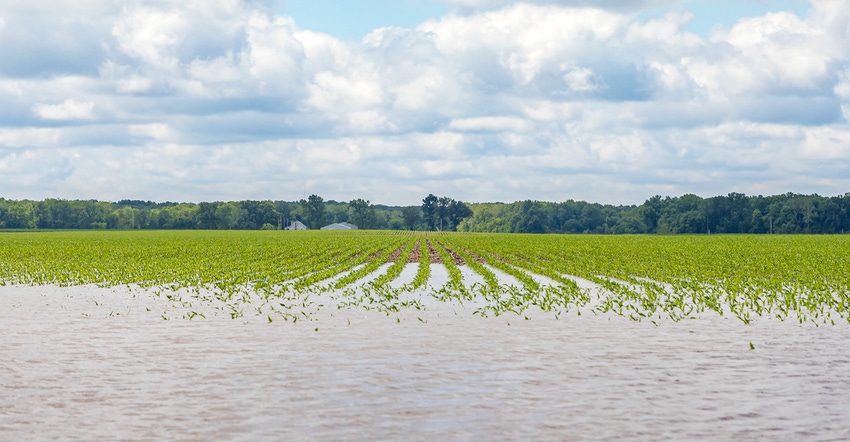March 18, 2020

Farmers anxiously awaiting spring rain forecasts might want to take several deep breaths and keep their rubber boots ready.
Above-average spring rainfall is expected in March, April, and May — which is exactly what happened last year.
However, recent forecasts call for warmer-than-average temperatures in March. If that happens, it could dry up some of the ground moisture, making it manageable for farmers to get into their fields to prep them for planting.
How much rain?
How much rain will this spring bring?
“It’s impossible to say,” says Aaron Wilson, climate specialist for Ohio State University’s College of Food, Agricultural, and Environmental Sciences (CFAES).
Time will tell whether the rain levels will rival last year’s, when farmers across the state struggled to get into their saturated fields. An unprecedented number of fields across Ohio were never able to be planted in 2019. When farmers were able to get into their fields, they risked their tractors and other equipment getting mired in the mud and compacting the soil, making it less suitable for seed growth.
“I do anticipate there will be challenges for some farmers similar to what they faced last year,” Wilson says.
Since it is uncertain how many rainy days spring will bring or which months will have the heaviest downpours, it is hard to predict how much of a challenge the rain will be for farmers this year.
If this spring’s rain falls mostly in May, as it did last year, planting efforts could be hampered significantly, as they were last year. But if April is wet and May offers a reprieve with warm and mostly dry days, planting will likely be a success, Wilson says.
Above-average rainfall is expected to continue into at least early summer, outlooks for Ohio suggest.
Bright spot for southern Ohio
But there is a bit of good news. Across southern Ohio, the ground is not nearly as wet as it was last winter. This winter has brought less rain than winter 2019, and this past fall was much drier than the previous fall for southern Ohio.
However, northwest Ohio has had no such break. The region never dried out last fall, and it has been as wet this year as last. An extended period of warm temperatures and dry weather are sorely needed before the planting season begins.
2019 was the sixth-wettest year on record in Ohio, and it also was the 12th warmest — part of an ongoing trend toward wetter and warmer years. Six out of Ohio’s top 10 wettest years have occurred since 2003.
“Ultimately, we need to be prepared for these types of scenarios and not think of them as, ‘They’re never going to happen again in my lifetime,’” Wilson says.
DeMartini is the technical editor for Ohio State University’s College of Food, Agricultural and Environmental Sciences
Source: OSU CFAES, which is solely responsible for the information provided and is wholly owned by the source. Informa Business Media and all its subsidiaries are not responsible for any of the content contained in this information asset.
You May Also Like




